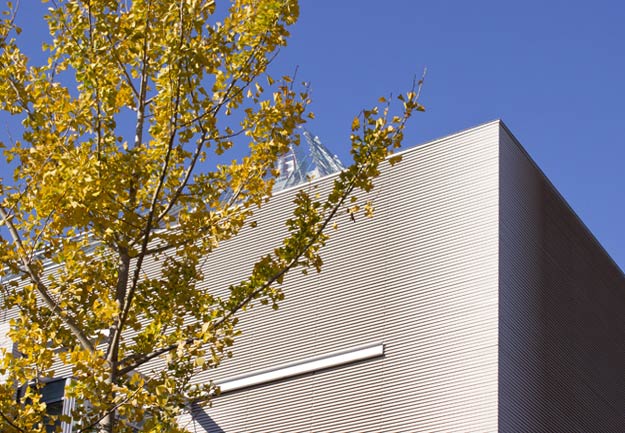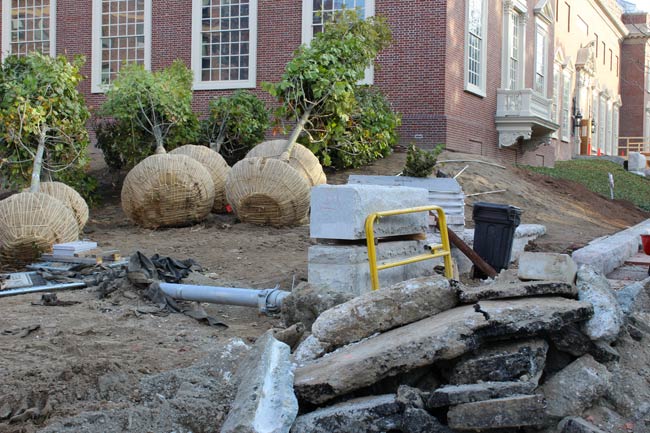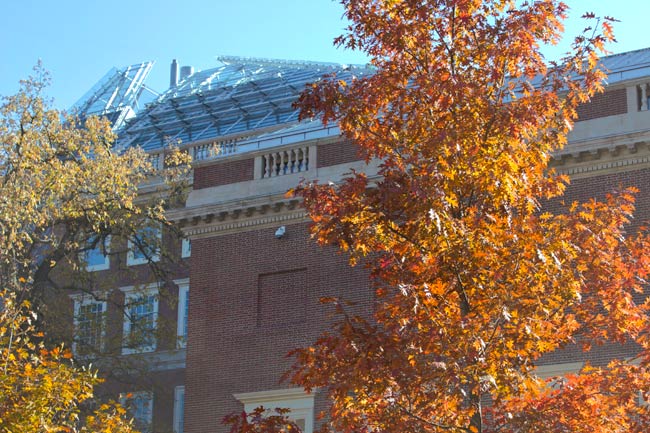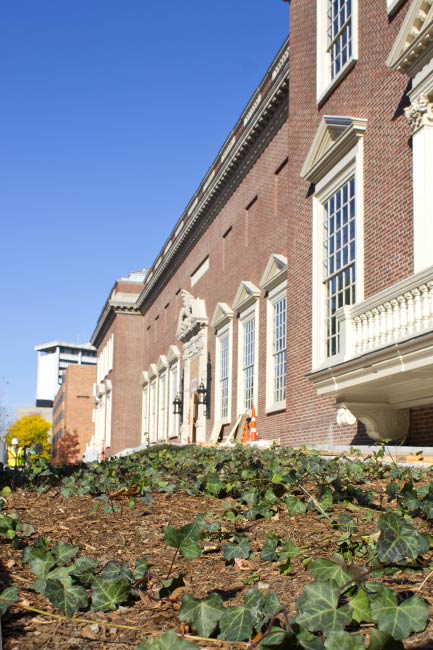Every autumn, the deciduous trees across Harvard’s campus burst into color, welcoming students back to campus. Next year, the trees that we’re transplanting around the Harvard Art Museums will join in this annual display, greeting visitors as they enter our new facility.
Along our new Quincy Street sidewalk, we’ve planted a row of London planes—a large deciduous tree that’s often used on busy streets because of its resilience in urban environments. Red oaks are now being eased into the ground on Broadway, fitting companions to the towering white oak that we’ve taken great care to preserve during our building project. A stand of ginkgo trees line our Prescott Street sidewalk, and in the green space that joins our facility to the Carpenter Center, we’ve planted ornamental crab trees that will flower white and red in the spring.
Underneath our sidewalks, which are designed to give these trees ample room to grow, the roots of these young trees are surrounded with nutrient-rich topsoil. To keep our trees hydrated, we’re installing an Environmental Passive Integrated Chamber (EPIC) system—the first of its kind used for Cambridge’s public sidewalks. The EPIC system captures and filters reclaimed water (storm water runoff), storing it in our building’s cistern. This water is then delivered underneath the trees, which take in the water through capillary action. By collecting and deploying water in this way, we’re using less resources and energy to keep our trees healthy.
Another familiar leaf now surrounds our building: English ivy. This hearty groundcover wraps around all four sides of our building, creating a uniform landscape. While we’ll let the ivy crawl, our facilities team will also work to keep it from climbing up our facility’s historic brick façade.
The addition of this new foliage brings our building project one step closer to completion—a step that will endure for many seasons to come.






